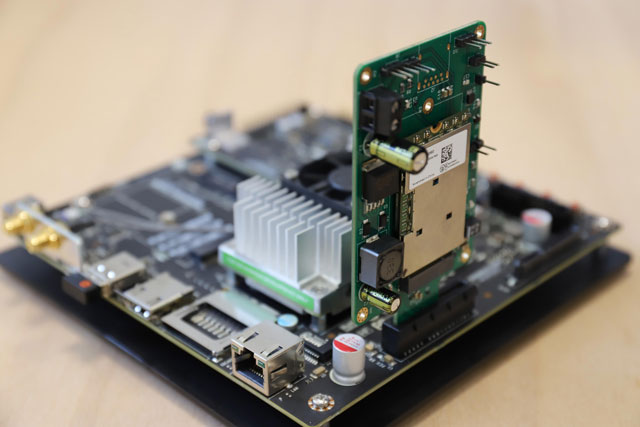
Mechatronics and software engineers at the University of Sheffield Advanced Manufacturing Research Centre (AMRC) North West have designed and built what they say is a novel, native 5G sensor to unlock the low latency and productivity potential of 5G in manufacturing.
“There is nothing like this available in the manufacturing sector. This is a fully integrated 5G device that can be connected to anything on the shop floor, from machines, sensors, automation and robots, to building management systems,” said Dr Aparajithan Sivanathan, Senior Software Engineer at AMRC North West.
Dr Sivanathan is project lead for the 5G Factory of the Future project, a £9.5m, two-year programme funded by the Department for Digital, Culture, Media and Sport (DCMS) and delivered by a consortium from industry which includes BAE Systems, IBM, aql, MTT, Miralis, Digital Catapult, and is being led by AMRC North West, part of the High Value Manufacturing (HVM) Catapult.
Digital Infrastructure Minister, Matt Warman MP, says the sensor can help manufacturers capitalise on the potential of 5G technology.
He said: “5G can play a massive role driving productivity in production lines up and down the country and I look forward to seeing this new kit in action on the factory floor.
“We have invested £200m in projects across the UK that use 5G in new ways to improve lives and boost the economy and I’m delighted that it has led to yet another innovation in this cutting-edge sensor.”
5G Factory of the Future is an open-access industrial testbed that aims to find new and more efficient ways of manufacturing to help lead industry towards a smart, sustainable and resilient future. The programme is designed to transform manufacturing by unlocking the potential of 5G technologies to accelerate industrial digitalisation. The testbed will be based primarily at AMRC North West’s soon-to-be-completed £20m facility on the Samlesbury Aerospace Enterprise Zone in Lancashire.
Dr Sivanathan said a key part of the testbed is connecting every piece of equipment on a factory floor to a 5G network. He said: “This will bring the physical elements of a factory floor even closer to intelligent, computational units; essentially it will weave an invisible, cyber-physical fabric necessary to achieve the vision of Industry 4.0 and beyond.”
More information: 5G Factory of the Future

